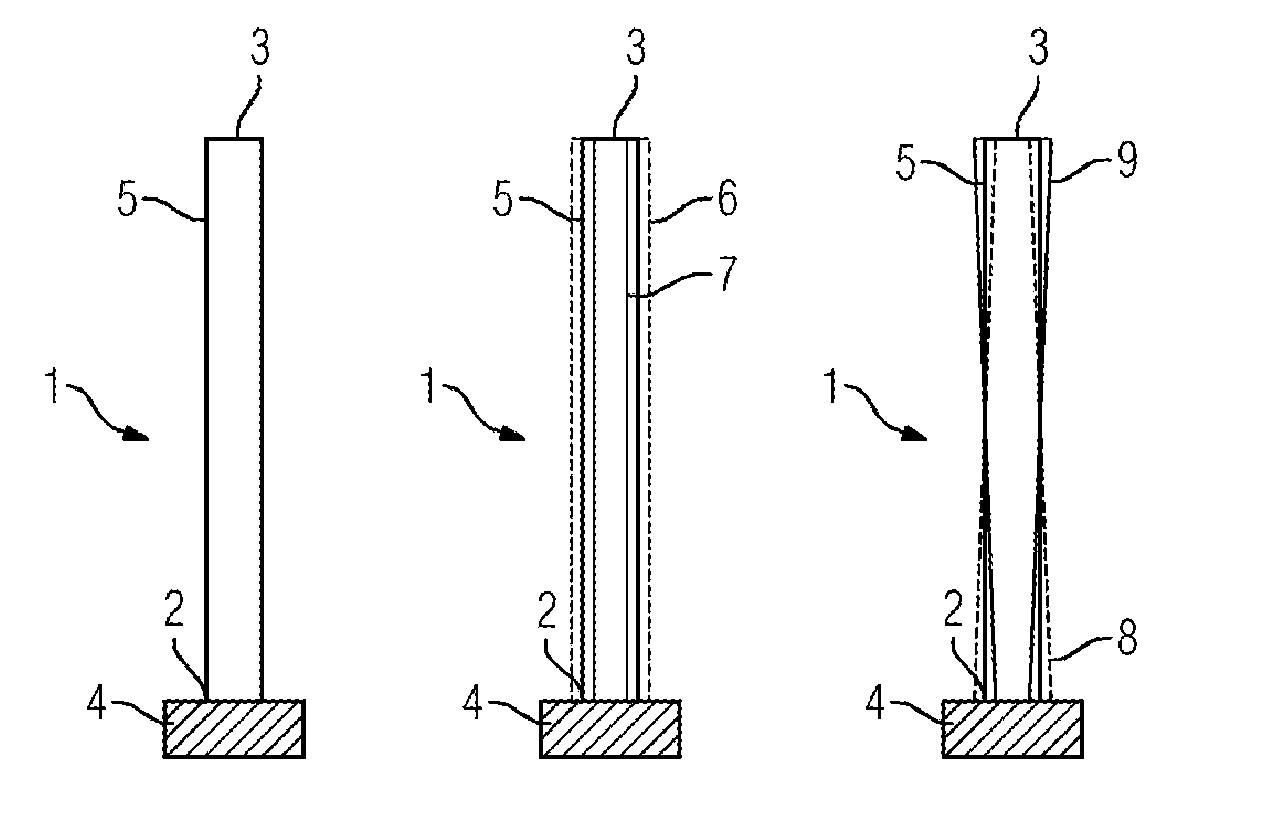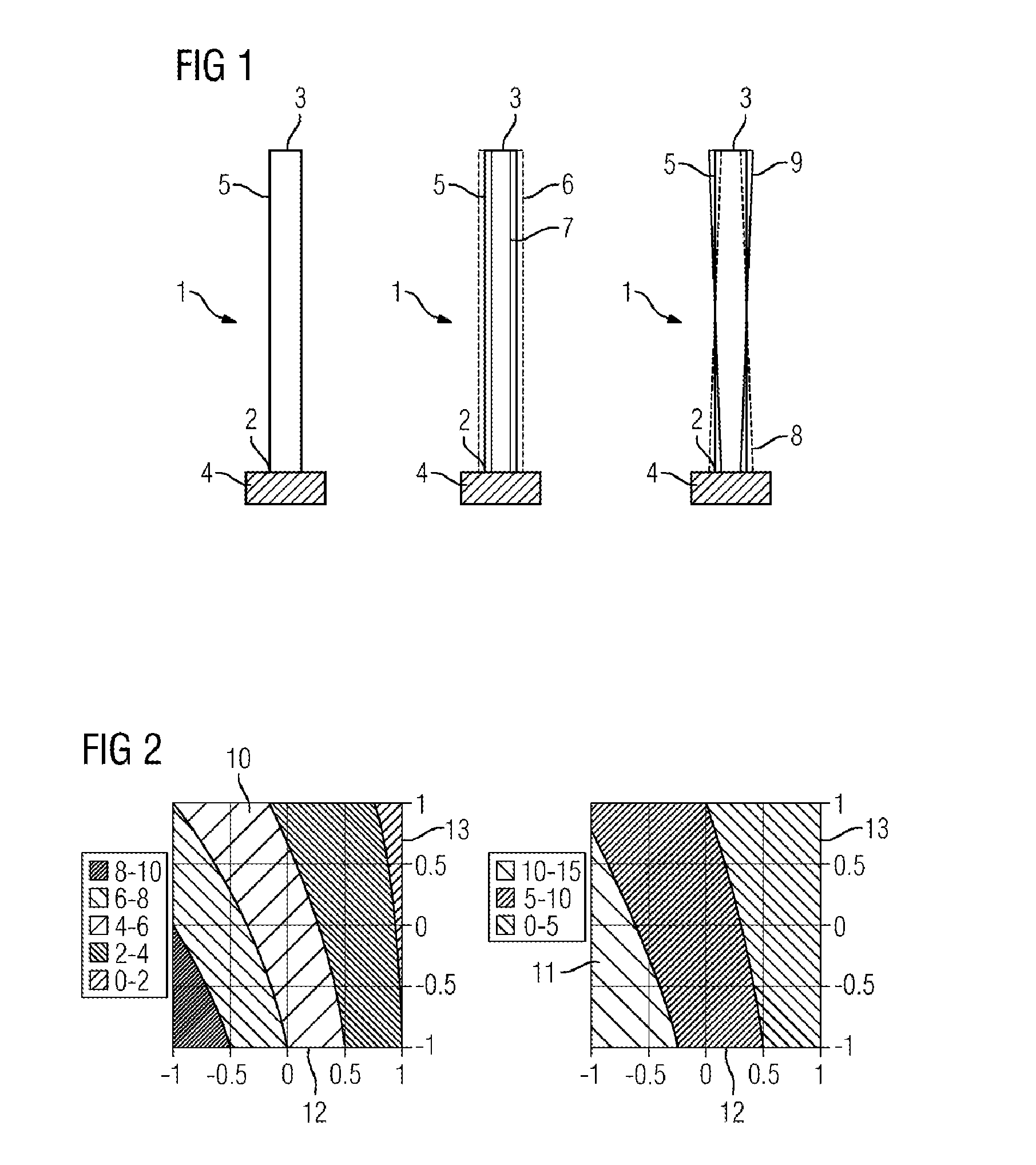Method for detuning a rotor-blade cascade
- Summary
- Abstract
- Description
- Claims
- Application Information
AI Technical Summary
Benefits of technology
Problems solved by technology
Method used
Image
Examples
Embodiment Construction
[0024]FIG. 1 shows three rotor blades 1 of a turbomachine, the first rotor blade being represented in its nominal geometry 5, the second rotor blade both in its nominal geometry 5 and in a first variation 6 and a second variation 7, and the third rotor blade both in its nominal geometry 5 and in a third variation 8 and a fourth variation 9. The rotor blades 1 have a blade root 2, which is firmly fitted on a rotor 4 of the turbomachine, and a blade tip 3 facing away from the blade root 2. In the event of an oscillation of the rotor blade 1 during operation of the turbomachine, an oscillation node is arranged at the blade root 2. The radius r of the rotor blade 1 is directed from the blade root 2 to the blade tip 3.
[0025]The second rotor blade shows variations 6, 7 of the nominal geometry 5, in which, starting from the nominal geometry 5 the mass m is varied but the radial center-of-mass position rS of the rotor blade is not. In the first variation 6, the mass m is increased by unifor...
PUM
| Property | Measurement | Unit |
|---|---|---|
| Thickness | aaaaa | aaaaa |
| Mass | aaaaa | aaaaa |
| Frequency | aaaaa | aaaaa |
Abstract
Description
Claims
Application Information
 Login to View More
Login to View More - R&D
- Intellectual Property
- Life Sciences
- Materials
- Tech Scout
- Unparalleled Data Quality
- Higher Quality Content
- 60% Fewer Hallucinations
Browse by: Latest US Patents, China's latest patents, Technical Efficacy Thesaurus, Application Domain, Technology Topic, Popular Technical Reports.
© 2025 PatSnap. All rights reserved.Legal|Privacy policy|Modern Slavery Act Transparency Statement|Sitemap|About US| Contact US: help@patsnap.com



